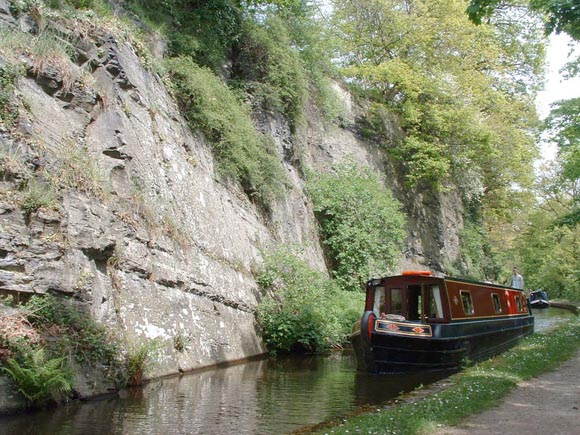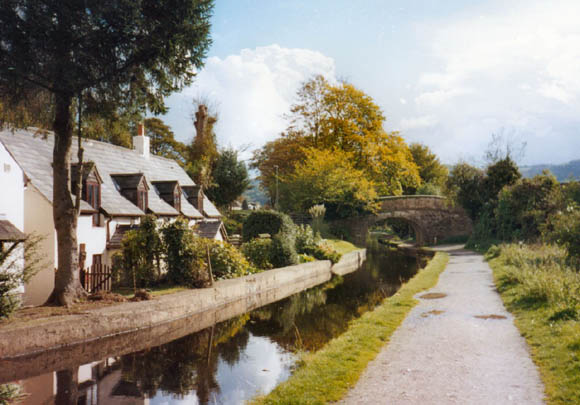The Llangollen Canal is an artificial waterway in Wales, United Kingdom.
What is today known as the Llangollen Canal was originally the centre section (almost the only part that was built) of the Ellesmere Canal, and later was part of the Shropshire Union Canal. Only with the increasing popularity of pleasure boats was it renamed the Llangollen Canal in an effort to attract more visitors; ironically, the canal was not originally intended to go to Llangollen.
Today, the canal links Llangollen in Denbighshire, north Wales, with Nantwich in south Cheshire, via the town of Ellesmere in north-west Shropshire.
History
The Ellesmere Canal was the first major civil engineering work undertaken by civil engineer Thomas Telford (though his designs were subject to approval by the more experienced canal engineer William Jessop). It was intended to serve the coalfields and ironworks near Wrexham, with connections northwards to the Mersey (Ellesmere Port) and southwards to the Severn.
After a while two sections had been completed: the short northern section from Chester to the Mersey, and the longer middle section from Trevor to Llanymynech. Then the plans were changed. The northern section was never extended south from Chester to Trevor, nor was the centre section connected to the Severn. Instead, the centre section was extended westwards to beyond Llangollen (to collect water from the Dee weir at Horsehoe Falls) and eastwards to Hurlestone Junction (near Nantwich, on the then rival Chester Canal. From Hurleston, boats could travel northwards to the River Dee at Chester and from there on the northern stretch of the Ellesmere canal to the River Mersey (at a place known since the arrival of the Ellesmere canal in 1796 as Ellesmere Port).
The southern extension of the Ellesmere Canal, (Frankton Junction to Llanymynech) was extended to Newtown, Wales, by the Montgomeryshire Canal - though nowadays we consider the Montgomery Canal to start at Frankton Junction.
All of these canals eventually became part of the Shropshire Union Canal complex.
Decline
Traffic on the canal greatly declined after the unrepaired breach on the related Newtown line, and the last recorded traffic passed in 1939. The Canal was formally closed under the London Midland and Scottish Railway Company Act of 1944, but was kept open to facilitate waterborne maintenance of bridges and to transfer domestic water from the Dee at Horseshoe Falls Dee to mid-Cheshire.
Today
With the growth in leisure boating in the last thirty years, the "Shropshire Union Llangollen Branch" (eventually renamed the "Llangollen Canal" to attract visitors) has become very busy indeed. Because of its spectacular aqueducts, the spectacular scenery, and because its destination is a well-known holiday village - it has become the most popular canal for holidaymakers in Britain, despite being a "dead-end". When the connected Montgomery Canal is open throughout, each of these two canals will no doubt reinforce the other's popularity.
The canal's most notable features include the spectacular Pontcysyllte Aqueduct, an aqueduct engineered by Telford to carry the canal over the valley of the River Dee east of Llangollen (the River Dee also supplies the canal with water, taken from the weir called Horseshoe Falls, about three miles west of Llangollen). Another aqueduct carries the canal over the River Ceiriog at Chirk; there are tunnels nearby at Whitehouses and Chirk, and another south-east of Ellesmere.
The canal also forms the boundary on two sides of the Fenn's, Whixall and Bettisfield Mosses National Nature Reserve. | 







